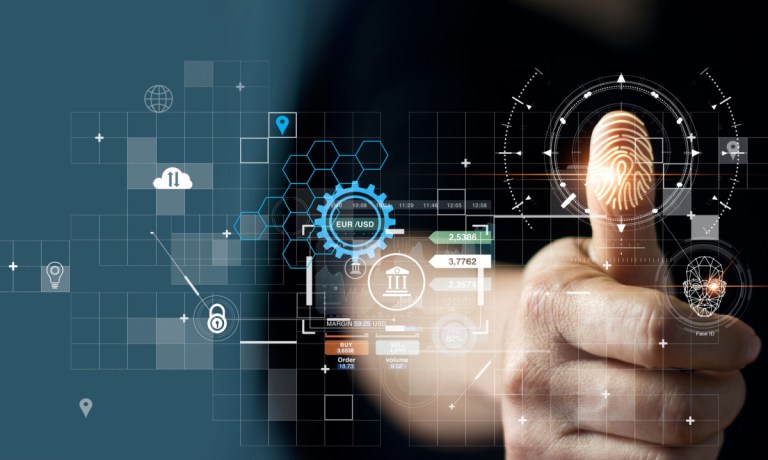Buying Into the Biometric Payment Opportunity in Mixed Reality

No single word signals the death knell of an innovation quite like the adjective “clunky.”
Yet, by some accounts, that’s exactly what the user experience of the first few generations of mixed reality (MR) and virtual reality (VR) headsets has been like, with users complaining of discomfort, headaches and eye strain due to the weight and special dynamics of the hardware devices.
That’s why the pressure is on for the in-headset payment experience to be as frictionless and as seamless as possible.
After all, nothing can kill a killer app or use case quicker than an experience of paying for and downloading it that leads to frustration. Virtual transaction capabilities will be what defines the broader adoption and use case potential of the emerging MR headset landscape.
And for MR and VR headsets to reach their full potential as a commercial, entertainment, and productivity platform while scaling across a global audience, the payment experience must be intuitive, secure, and instant — all without disrupting the augmented, in-headset reality.
Of course, that is all easier said than done.
Removing friction from in-headset payment experiences means managing elements that range from multicurrency payment issues and user onboarding to marketplace specific payment regulations, all while monitoring transactions for suspicious activity.
This, as biometric payment options leveraging iris scanning and facial recognition are being positioned as a potentially transformative payment technology for the MR and VR landscape, with observers believing that their integration can offer several advantages for secure and convenient payments.
See also: Reshaping Authentication, Igniting Debates and Driving Innovation with Biometrics
Eyeing Biometric Authentication for Mixed Reality Headsets
Traditional payment methods in VR/MR environments often involve removing the headset to enter payment details manually. Biometric payments eliminate this friction, streamlining the transaction process and maintaining the immersive experience.
Biometric authentication methods, such as iris scanning or facial recognition, provide a higher level of security compared to traditional methods like passwords or PINs. This can reduce the risk of unauthorized access to financial transactions. Continued advancements in biometric technology may even lead to more accurate and robust authentication methods, potentially incorporating behavioral biometrics like hand movement patterns or gait recognition.
Because of the need to uphold existing security practices while placing a greater emphasis on knowing the customer in real time within the MR and VR experience, biometrics offer an attractive — and continuous — payment authentication method.
Biometric payments also eliminate the need for users to remember and input passwords, making the payment process more seamless and user-friendly. In the context of VR/MR, where traditional input methods might be cumbersome, biometrics can enhance the overall user experience.
Already, the Apple Vision Pro headset leverages Optic ID Authentication, which includes a mathematical representation of the user’s iris, to determine whether the person wearing Apple Vision Pro is the enrolled user.
Other uses of Optic ID, per the company’s materials, include making payments with Apple Pay, making purchases within the App Store, and authenticating within apps.
One benefit of biometric authentication is that it allows multiple users to use one device, as the headset automatically recognizes their profile when the headset is activated.
Read more: Consumers Embrace Facial Biometrics as Lawmakers Raise Fresh Privacy Concerns
Keeping an Eye on Potential Risks of Biometrics
Still, biometric authentication is subject to various rules and regulations across different geographies, making it challenging for headset device manufacturers to produce a consistent authentication and payment experience across, for example, the European Union (EU) and the U.S. due to the sensitivity of the personal data being collected.
Storing and securing biometric data is a critical aspect of any biometric authentication system. If not properly protected, biometric information (such as fingerprints, iris scans, or facial recognition data) could be vulnerable to theft or unauthorized access, leading to identity theft or other malicious activities.
In the event of a data breach, biometric data is irreplaceable. Unlike passwords or PINs, which can be reset, biometric information is unique to individuals and cannot be changed. A breach could have long-lasting consequences for individuals’ privacy and security.
If biometric data collected in VR/MR settings is linked to other platforms or databases, there is a risk of creating comprehensive profiles of individuals without their explicit consent. Ensuring strict compartmentalization of biometric data is crucial to prevent unwarranted profiling.
That’s why providing users with control over their biometric information, including the ability to opt in or out, is essential for maintaining privacy.
That said, “Biometric Authentication in the Age of Mobile,” a PYMNTS Intelligence and AWS collaboration, finds that consumers are comfortable with biometric use, at least when it comes to making payments.
That study found that more than half of consumers who bought things online used biometric tools to authenticate their transactions.
“These include facial recognition and fingerprint scans, the two most popular biometric methods adopted by 28% and 49% of consumers, respectively,” PYMNTS wrote. “The study also revealed that nearly 60% of facial recognition users use the method more than once weekly.”